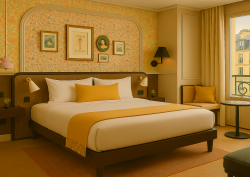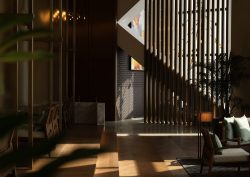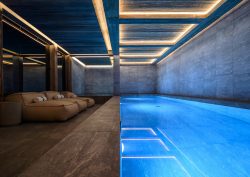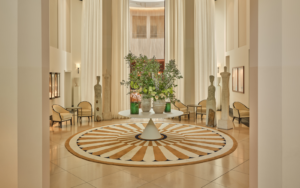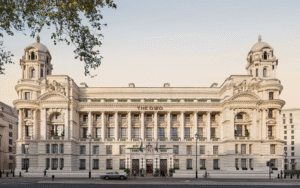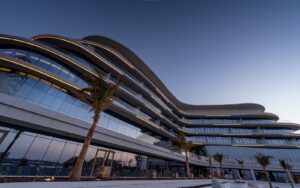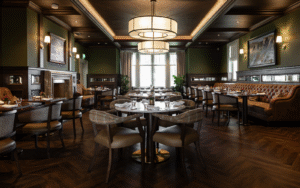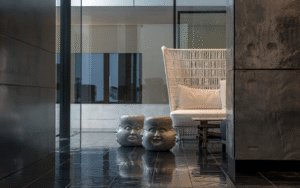Six Senses Rome is preparing to open its doors onto the Piazza di San Marcello. With interiors by Patricia Urquiola, it is a clear case of modernity meets classicism in the heart of the city…
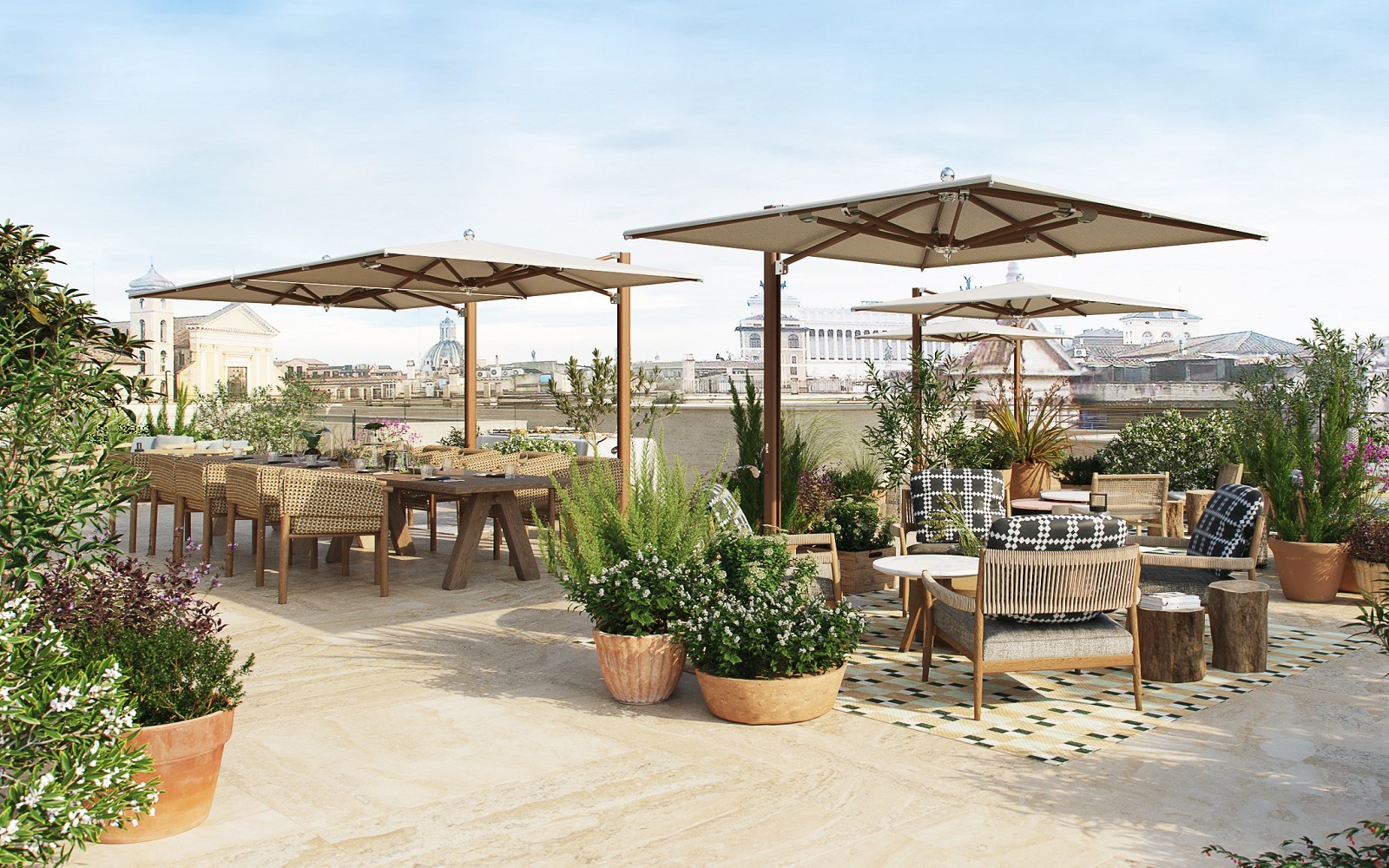
Slated to open in March, Six Senses Rome will be the first Six Senses property to open in Italy. The hotel will shelter 95 distinct guestrooms and suites, a spa, restaurant, events terrace, outdoor courtyard garden and rooftop terrace with a 360-degree view of the city and its monuments. Located in the Palazzo Salviati Cesi Mellini, originally built in the 18th century, the interior design is by Patricia Urquiola, who, mindful of the building’s authentic heritage, has created a design that sensitively fuses a contemporary vision of hospitality behind the UNESCO listed façade.
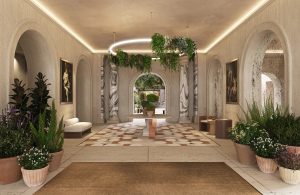
Image credit: Six Senses
On entering the Palazzo, the lobby represents all the elements of Urquiola’s unique design vision. Guests are greeted in the grand, spacious space adorned with plants, complete with show-shopping travertine fixtures, whilst the space is magnified by the five main arched portals. Under the striking, centre-piece chandelier, lies the table sculpture with classical features. The base of the table is a sculpture by contemporary artist Paolo Giordano representing Janus, the god of all beginnings, with two faces. Janus is the ancient Roman god who looked into the past and future. Placed at the hotel’s entrance, the sculpture looks towards the historic Piazza di San Marcello, and to the future, the hotel’s gallery. The gallery’s artwork is a symbol of the Six Senses project, celebrating the past with its classicism meeting the innovation of the future.
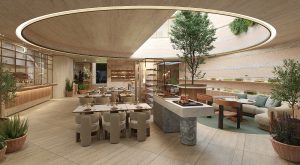
Image credit: Six Senses
The ground floor is dedicated to the BIVIUM restaurant and bar, which has been designed to replicate a Roman ‘piazza’. Here lies further references to Latin classicism within the floor mosaics which take their cue from a 2nd century B.C. mosaic preserved in the Vatican Museums. The mosaic celebrates the ancient tradition during the banquets of Imperial Rome where uneaten food, such as fruit, fish bones, chicken bones, and shells, were left on the floor. These remembrances of dinner leftovers create a decorative theme of the restaurant floors and celebrate the beauty of nature, the poetry of conviviality and the pleasure of dining.
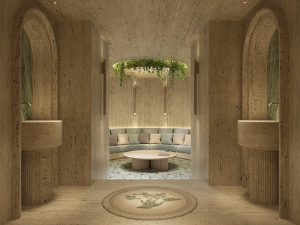
Image credit: Six Senses
Located on the first floor, Six Senses Spa and Roman baths will play an integral role as a sanctuary of wellness for guests enjoying the city’s sights, nights and delights. With its calming atmosphere and contemporary design, the spa will house a range of treatment rooms, a fitness centre and relaxation areas. The spa design features recurring depictions of the Apollo and Daphne myth which tells how Eros had caught Apollo with one of his arrows, making him fall madly in love with the nymph Daphne, who was finally transformed into Laurel. References to the mythology run through the design with representations of Laurel within the Roman mosaic medallion in the spa, in the retail area, and in the treatment rooms. On the walls of the wet area, a bas-relief portrays the nymph’s transformation into laurel tree, while the artwork portrays hands transforming into flowers and leaves.
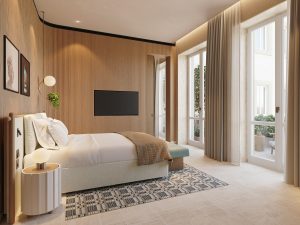
Image credit: Six Senses
The central floors house the guestrooms and suites, many with notably high ceilings and each with its own key feature, staying true to how Six Senses likes to keep things original. The guestrooms combine contemporary design alongside traditional features with the use of traditional cocciopesto plaster and Travertine limestone. The patterns and the graphic design elements combine with suspended plants and natural light, focusing on well-being and sustainability through the introduction of biophilic elements. The rooms feature diptychs by South Korean artist T-Yong Chung. These works represent a modern look at classical Roman statues. T-Yong does a formal alteration of the images he produces, creating a sense of incompleteness and disconnection from reality.
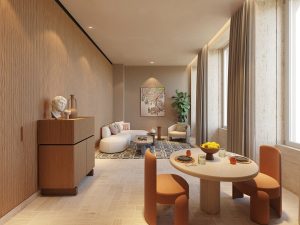
Image credit: Six Senses
The crowning glory of the property is the large rooftop terrace with panoramic views, complete with an organic fruit, vegetable and herb garden, creating a secret garden escape unlike any other in the heart of Rome. The rooftop terrace and restaurant caters to all-day tastes from Ashtanga at sunrise to an Italian-style aperitivo at sundown, all while having the historical centre of Rome at your feet.
Main image credit: Six Senses




